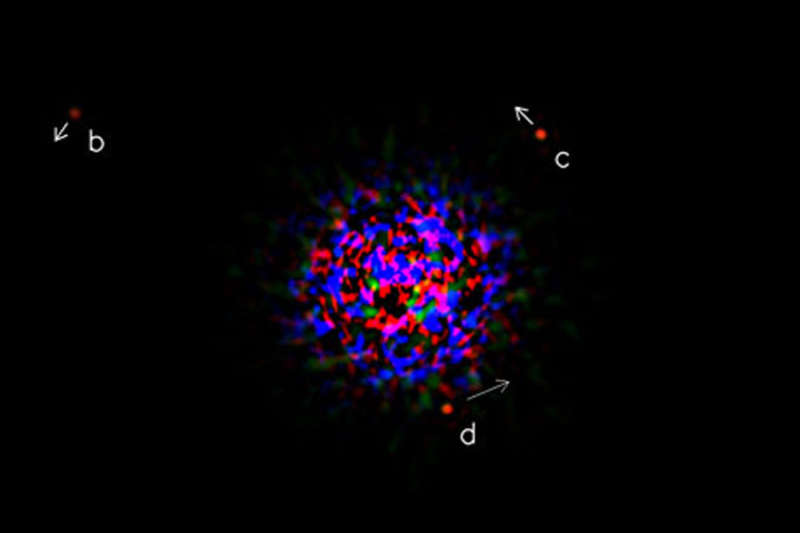
|
Credit: C. Marois et al.,
NRC Canada
Explanation:
How common are planetary systems like our own Solar System?
In the twelve years previous to 2008,
over 300 candidate planetary systems have been found orbiting nearby stars.
None, however, were directly imaged, few showed evidence for multiple planets, and
many had a Jupiter-sized planet orbiting inside the orbit of Mercury.
Last week, however, together with
recent images of
Fomalhaut b, the
above picture was released showing one of first confirmed images of planets
orbiting a distant Sun-like star.
HR 8799 has a mass about 1.5 times that of our own Sun, and lies about 130 light
years from the Sun -- a distance similar to many stars easily visible in the night
sky.
Pictured above, a 10-meter
Keck telescope in
Hawaii
captured in infrared light three planets orbiting an artificially obscured central
star.
The 8-meter
Gemini North
telescope captured a
similar image.
Each planet likely contains several times the mass of
Jupiter, but even the innermost planet,
labelled d, orbits out near the orbit of
Neptune.
Although the
HR 8799 planetary system has significant
differences with our Solar System, it is a
clear demonstration that complex planetary systems exists, systems that could
conceivable contain an
Earth-like planet.
|
January February March April May June July August September October November December |
| ||||||||||||||||||||||||||||||||||||||||||||||||
NASA Web Site Statements, Warnings, and Disclaimers
NASA Official: Jay Norris. Specific rights apply.
A service of: LHEA at NASA / GSFC
& Michigan Tech. U.
Based on Astronomy Picture
Of the Day
Publications with keywords: planets
Publications with words: planets
See also:
